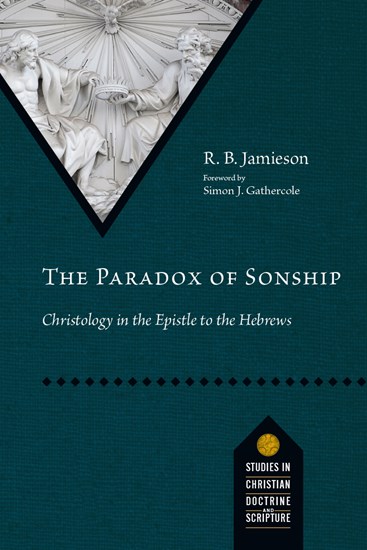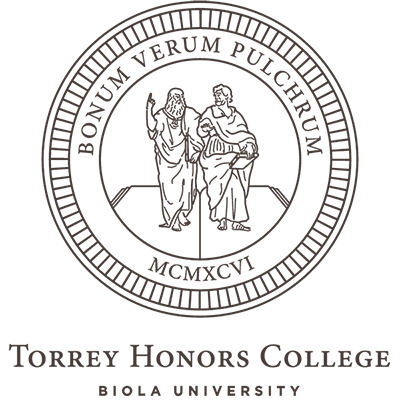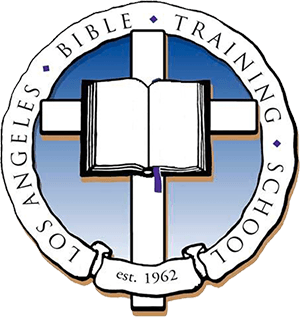A scene from The Canterbury Psalter (12th century)
Blog
The Doctrine of the Son in Hebrews
Remarks on R. B. Jamieson’s The Paradox of Sonship (IVP Academic, 2021)

Regarding this book I have much to say, having been enthusiastic about the idea of it since Bobby Jamieson described it to me as early as 2016, and having been enthusiastic about the first version of the manuscript since I glimpsed it in 2017. I hope the time is near when we can begin describing not only the book’s merits but also its influence, which deserves to be substantial. In addition to being a virtuoso individual performance and a close reading of this one particular and rather unique New Testament book, The Paradox of Sonship also represents a style of reading that holds great promise for biblical and theological studies at large.
I use the phrase “style of reading” rather than the imposing word “methodology” advisedly, since I am distantly aware of just how astonishingly sophisticated the discussion of methodological matters continues to be, and I don’t want to be mistaken for having more developed convictions on these matters than I actually have, or having a fully articulated position—or imputing one to R.B. Jamieson. What I want to commend is not so much a method that can be duplicated and applied to other texts and doctrines, but just a way of reading which, as it has been fruitful for this project on Hebrews and divine sonship, may also be fruitful in other arenas.
In these brief remarks I’d like to say a little bit about that style of reading, and then turn to the subject matter itself, the theological topic to which the book makes its contribution: the doctrine of the Son.
Not Construction but Detection
Speaking from the systematic theology side of the academic house, I confess that systematic theologians have a bad habit of treating the Bible as raw material for doctrinal construction projects. At its worst, this can express itself as an approach to the Bible as a storehouse of claims, ideas, injunctions, and images that somebody could really do something with. On the conservative and churchly side of things, the result is a tendency to file away all the contents of Scripture without remainder into the traditional doctrinal categories they can be seen to support. Hebrews, on this view, can largely be sorted into what it claims about God, Christ, the Spirit, God’s speech, salvation, and so on. But the raw-material view also holds sway on the more adventurous, less tradition-minded side of modern academic theology. These practitioners are eager to requisition the elements of Scripture to construct striking new configurations of ideas and startlingly novel juxtapositions of images.
The strongly contrasting traditionalist and innovationist projects seem like opposites, but they are variations on the constructivist theme. Whether in service of maintaining tradition or of funding creative new ventures, the constructivist idiom relegates Scripture to raw material, and sets up a post-biblical theological laborer as the demiurgic force that somehow infuses the meaningful, doctrinal, formal causes into the recalcitrant, textual, material substratum. And if this is how theologians animated by the constructivist idiom treat scripture, it’s easy to imagine how they treat the work of their colleagues in biblical studies.
The style of reading exemplified in The Paradox of Sonship is different. For Jamieson, the hermeneutical work that needed to be done here was not primarily construction but detection, detection of structures already present in the material. Hebrews speaks a certain way—sometimes a rather perplexing way—and the goal of the interpretive task is to rearticulate what it says, but also why it says it. There are specifiable intellectual skills and virtues necessary for succeeding in rearticulating what a text says; to catalog them would cover a lot of what we expect from the art of modern academic commentary. But then there are different intellectual skills and virtues necessary for the deeper task of accounting for why the text says what it says. The operative question here is, “What must be true in order for the Bible to speak this way?” In Hebrews, of course, the key issue is that it speaks of the Son in a variety of ways, and the resulting interpretive necessity is to discern what the author must be presupposing about the Son in order to be able to speak in that way, or rather, those ways.
Sometimes these underlying structures are easy to detect, and there is consensus about what they are. But in some cases they are more subtle, further from the surface patterns of usage, and therefore harder to detect. In these cases, the grain of truth in the constructivist idiom shows itself: interpreters have to generate possible models of what’s going on, and then project them onto the text to see how well they match. The models are in fact constructed; that’s the grain of truth. But they are constructed and projected purely in service of detection and discernment. The hypothesis is not that the textual phenomena are disordered and in need of some imposed structure, but that they are in themselves ordered in a way difficult to discern or understand (dis-hermeneutic as Hebrews says of Melchizedek). In a line that Jamieson borrows from me but does much more with than I ever did, “it is better to suppose that Scripture speaks from an achieved synthesis and gives partial expression, here and there, to glimpses of that fullness and coherence” (Sanders, The Triune God, 242; Jamieson p. 148). The hypothesis is that the scattered, hard to reconcile, and sometimes apparently contravening statements of Hebrews about the Son are glimpses of an already achieved synthesis, if only we could detect and articulate that wholeness.
Detection of Very Large Structures
And wholeness is the key term. I’ve spoken so far as if the challenge has to do with subtlety: as if the connections are too oblique, the clues buried too deep in the textual ground, the signs too faint to be easily read. But in many cases, the challenge is not so much subtlety as sheer, massive scale. Some of the structures we are trying to detect in Scripture are very large; they are simply too vast to be grasped by normal procedures.
For merely subtle matters, a certain kind of focused and minute power of attentiveness is required. But for very large matters, what is required is a kind of holistic attentiveness, a power of grasping gigantic structures of meaning within which we live and move and do our reading. This kind of holistic attentiveness is especially necessary when these structures in question are large enough to not only dominate the text in front of us, but also to be realities that arc over us in our own experience of the world. Theological realities necessarily claim to be such structures, and if we are persuaded of their verity, then our interpretive engagement of them requires peripheral vision. And here I want to remind everybody that Paradox of Sonship is an entry in the important book series called Studies in Christian Doctrine and Scripture, edited by Kevin Vanhoozer and Dan Treier. This series is succeeding at populating the field with a host of creative approaches to doing theology by way of biblical engagement, often in modes that are unconventionally comprehensive.
If the interpretive task is not construction but detection, then a large part of writing about these things will be in the ostensive mode, by indicating or pointing to the thing we see in the text. That’s hard enough when the structures are subtle, but what about when the structures are large? To indicate the presence of a very large structure of meaning, one must point not at a discrete item, nor even at a network of discrete items scattered about, but at a horizon. You cannot effectively point out the horizon with your finger, but rather with the sweep of an arm. And yet you don’t want be counted among the scholars who just wave their arms around (scholarly arm-waving is what we tend to engage in during lectures when we know our case is not strong.) What to do? The answer must conform to the specific subject matter under investigation; to the peculiarities of the text and the particularity of the structure being indicated.
Bobby Jamieson’s Paradox of Sonship carries out this style of reading, and follows this mode of demonstration, with great exegetical suasion. The subject matter is the doctrine of the Son. Hebrews is a peculiar book which has perplexed some of its most careful readers by using the category of “Son” in ways that can seem ambiguous if not downright confused. Is ‘Son’ a title of the one through whom God made all things, or is it a messianic accomplishment? Jamieson says that it is both; in fact it is at least both, and perhaps more. In fact, this bothness or moreness is central to grasping something vast and elusive that determines the argument of Hebrews.
Jamieson summarizes his argument by saying that “Jesus can become the messianic Son only because he is the divine Son incarnate. According to Hebrews, ‘Messiah’ is a theandric office: only one who is both divine and human can do all that Hebrews says the Messiah does.” (p. 2) This excellent internal summary demonstrates the reach of the book’s rhetoric. It plants its feet firmly on the obvious claims made by the text itself, expressed in nearly the text’s own language, but it waves to the vast horizon, and does so by carefully deploying thickly theological language from the Christian doctrinal tradition: incarnate, theandric. The communicative strategy is in places what we might call cautiously transgressive. Jamieson is not provoking the standards of the biblical guild just for the sake of doing so, but is strategically appealing to a “classical Christological toolkit” in order to help do the pointing. At risk of belaboring a metaphor, it is crucial to note that he is not pointing to the doctrinal terms themselves as an object of attention. He is using the traditional doctrinal terms to point to the thing in the text.
Hebrews and a More Comprehensive Huiology
The thing in the text is the Son. But the dynamic of Hebrews’ argument motivates Jamieson to discern, or detect, a doctrine of the Son that takes in both his eternal being with God and his historic becoming in the days of his flesh. It is a doctrine of the Son very large in scope, and Jamieson devotes the book to the task of pointing it out and increasing its plausibility. By appealing to categories from Nicaea and Chalcedon and Augustine and Aquinas, and above all Cyril of Alexandria, Jamieson limns this vast and comprehensive Sonship of Hebrews. In this regard, the book demonstrates how classic Christian theological categories can help biblical studies do its proper work.
But I want to conclude by showing that the reverse is also happening in this argument. In discerning this vaster doctrine of the Son, Jamieson also brings biblical studies to the help of systematic theology. Here is how: Systematics distinguishes between what God is in himself and what he does for us and our salvation. That’s a Nicene phrase, and since Nicaea this distinction has been described as the distinction between theologia and oikonomia. But teaching about Jesus Christ must be teaching that occupies both domains. John Webster, who makes several appearances in this book especially for his great Hebrews essay “One Who is Son,” put it this way: “A complete Christology comprises two integral parts: teaching about the eternal Son or Word, his deity and the relations which he bears to the Father and the Spirit; and teaching about the Son’s temporal mission, especially in the assumption of flesh to redeem lost rational creatures.” (God Without Measure I, p. 44) Or, a bit more pointedly, “The matter treated in Christology straddles the two subject-domains of systematic theology. Christology considers both the eternal Word, intrinsic to God’s inner being, and the Word’s temporal mission in creation, providence and supremely in the person and work of Jesus Christ.” (GWM I:47, just before his famous remarks on “distributed doctrine”). Webster described Christology this way because he worried that much modern theology failed to recognize the distinction between the two domains, and/or failed to recognize that Christology straddled them both, and/or failed to develop Christology in a way that kept the amplitude of the doctrine in clear view.
Time would fail me if I tried to describe the host of dysfunctions that follow from these errors in modern systematic Christology. But I only want to point out the similarity to Jamieson’s argument about Hebrews: The solution is exactly the same: to discern a doctrine of the Son so capacious as to cover theologia and oikonomia. Much modern theology stands in need of the correction administered by Hebrews, read according to the style of reading we have in Jamieson’s work.
There is no official name for the kind of Christology developed under the guiding rubric of Sonship. Based on the Greek word huios, we could coin the word huiology to help indicate that the fundamental category for so capacious a doctrine is not Messiah but Son. ‘Huiology’ may be an unlovely and novel coinage, but in my defense I could point out that ‘Christology’ only sounds better because we’re used to it, and it’s only been around for about 500 years (apparently first used by Balduin circa 1600).
‘Messiah’ and ‘Lord’ and all the other titles can fit comfortably within the parameters of an all-encompassing huiology, and Hebrews is a guiding resource for the elaboration of such a doctrine of the Son. It would align with the very same classical Christological toolkit celebrated and employed by Jamieson, but it might enable us to use them with a more natural and organic sense of their coherence and aptness. It would also be closer to, and more transparent to, the way the words of Scripture themselves run, especially in Hebrews.
It is an old cliché that the categories of systematic theology are too rigid to do justice to the flexibility and richness of Scripture. But there is something to it. The problem with the application of the cliché is that most people take for granted that the inflexible theology is the Christology and trinitarianism of the ancient church, and that the free and living reading is the reading that best aligns with contemporary theological sensibilities, or at least with nineteenth-century criticism. In fact, though, readings such as Jamieson’s suggest that the right style of Bible reading rescues us from the sclerosis of modern theological categories, with the help of classic theological categories. This is a major adjustment to our understanding of what we’re up to, and a major contribution to detecting the full scope of a comprehensive doctrine of the Son.
[This was a 15-minute response I prepared for the “Theology, Hermeneutics, and Biblical Interpretation” section of the Institute for Biblical Research’s 2022 conference. It was a great panel populated by Mark Gignilliat, Brandon Smith, Amy Peeler, and me, moderated well by Stephen Presley. The session drew a good audience, including a number of senior scholars who spoke up during the open discussion.
The Peeler-Jamieson scholarly interaction was especially memorable. From my seat at their right hand, I couldn’t help noticing that these two both had the text of Hebrews open for ready reference, and made constant quick use of it while listening to others speak. The two who knew the text best were the two who had it most at hand! Between them these two carried out a live clinic in how to collaborate, correct, and just generally push each other collegially to read the text more accurately. As Dan Treier (photo credit) pointed out at the time, the kind of humility and openness on display here is rare in the academy. The details of this interaction are not my story to tell, but I hope it appears in print somewhere.]

About This Blog

Fred Sanders is a theologian who tried to specialize in the doctrine of the Trinity, but found that everything in Christian life and thought is connected to the triune God.


